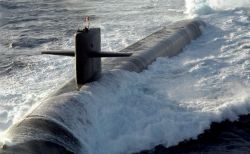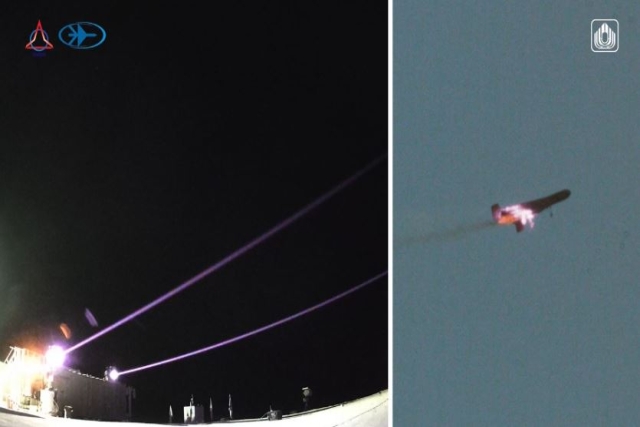US Military Building Next-Generation Arms Despite Budget Cuts

Budgets cuts don’t seem to have had a heavy effect on the US military which seems to have doubled its efforts to develop new technology.
The US Navy announced last week that it is gearing up for deployment and a new round of tests of its Surface Ship Torpedo Defense System. It is a high tech system designed to protect aircraft carriers by locating, tracking and intercepting incoming torpedoes, the Navy explained.
The SSTD system, which consists of a sensor, processor and small interceptor missile, is a first-of-its-kind “hard kill” countermeasure for ships and carriers designed to defeat torpedoes, Rear Adm. Dave Johnson, Program Executive Officer, Submarines was quoted as saying.
The SSTD is slated for additional testing on board the USS Bush next month in what’s called a Quick Reaction Assessment, Johnson added.
With a Torpedo Warning System Receive Array launched from the winch at the end of the ship, it is essentially a towed sensor or receiver engineered to detect the presence of incoming torpedo fire.
The Receive Array sends information to a processor which then computes key information and sends data to interceptor projectiles — or Countermeasures Anti-Torpedos, or CAT — attached to the side of the ship.
In addition, the U.S. Navy is in the early phases of developing a prototype and building specs for its next-gen nuclear-armed ballistic missile submarine—the Ohio Replacement Program.
Construction of the Submarine is expected to begin in 2021 and will replace the existing fleet of Ohio Class submarines, a class of ballistic missile submarines.
“We’ll complete 161 ship spec sections this year needed to define the hull and mechanical and electrical systems. This early-stage work is critical to achieving a design that is 80-percent complete by construction’s start and producible with few design errors,” Johnson said about the program.
The submarine, 560 feet long with 44 foot-long missile tubes, is being built to serve as a stealthy, high-tech strategic nuclear deterrent able to silently sail.
The ship is also being engineered to ensure a nuclear counter-strike capability in the event of attack.
The ORP is slated to serve through 2085 and conduct 124 patrols per-ship, Johnson said.
Construction, testing and design work is underway at a handful of locations around the U.S. and in the U.K., as part of the ongoing technology development phase, or TD phase. The Navy’s Ohio Replacement Program is being worked on by Electric Boat, a division of General Dynamics, under a five-year, $1.85 billion deal, he added.
The US Department of Defense last week awarded Northrop Grumman and Lockheed Martin $14.6 million and $11.4 million contracts respectively to develop laser weapons that can be mounted on UAVs and shoot down missiles.
A DARPA (Defense Advanced Research Projects Agency) brainchild, Project Endurance will be developed with “coherent optical phased array technologies to enable scalable laser weapons that are 10 times lighter and more compact than existing high-power chemical laser systems,” according to a statement.
The Navy is also reportedly mulling over the possibility of upgrading its F/A-18 Super Hornet aircraft.
Upgrades could include engine improvements, new electronics, the use of a conformal fuel tank, an enclosed weapons pod and efforts to reduce the radar detectability or “signature” of the aircraft, officials were quoted as saying.










